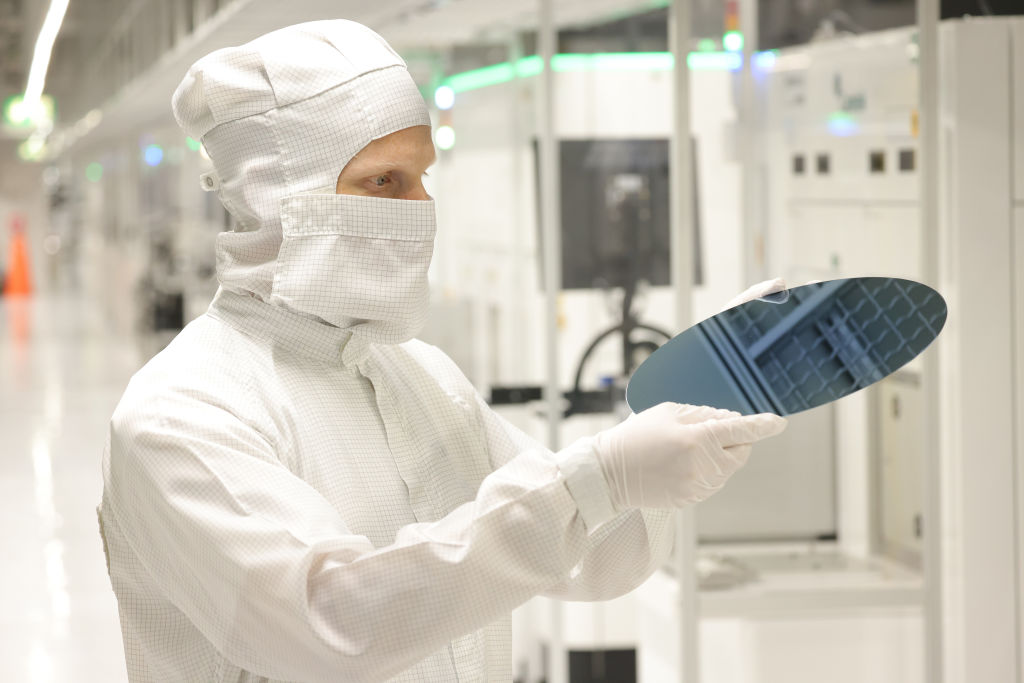The rapid expansion of the U.S. semiconductor industry could potentially be stifled by a looming talent crisis. A new McKinsey study found there could be a potential shortage of between 59,000 and 146,000 workers—technicians and engineers—in the domestic semiconductor sector by 2029. Semiconductors, also known as chips and integrated circuits, power everything from smartphones, computers, microwaves and cars all the way to military weapons and A.I. applications.
The labor shortage could make it harder for suppliers to keep up with the growing demand for chips, especially as A.I. continues to boom. The U.S. CHIPS and Science Act provides nearly $53 billion to spur the development of the chip sector on American soil. Since President Biden signed the bill in August 2022, major chip manufacturers like TSMC, Intel, and Samsung (SSNLF) have received billions in federal investments to build new factories and expand their operations across the U.S.—funds slated to create over 115,000 manufacturing and construction jobs.
But if they don’t have enough technicians and engineers, factories won’t be able to run at their full capacity. In turn, manufacturers will be less productive, which could raise the price of consumer devices. “The world’s semiconductor leaders are betting on the U.S. becoming a manufacturing hub that has productivity similar to their home geographies,” Bill Wiseman, a senior partner at McKinsey who leads the consulting firm’s chip division, told Observer. “If we can’t achieve that, we’ve got a problem.”
On top of that, the inability to close the gap could make it harder for the U.S. to compete in the global semiconductor industry. The U.S. imports the majority of its chips from Taiwan, and as tensions between China and the island escalate, the production and shipment of chips to the U.S. could potentially come to a standstill. If that happens, companies may not be able to produce devices that require chips, which some experts say could hurt the economy and compromise national security.
“There’s been a lot of taxpayer money spent on helping to ensure that we get the investments made over here,” Taylor Roundtree, an associate partner at McKinsey involved in the study, told Observer. “We just want to make sure that investment is used appropriately.”
Job training programs in the chip sector are growing
Academic institutions, in collaboration with public and private agencies, have made some efforts to expand America’s semiconductor workforce.
Purdue University, for instance, leads SCALE, an academic program funded by the Department of Defense that aims to train students across 22 universities to work as microelectronics engineers, hardware designers and manufacturing experts. As for technicians, the Maricopa County Community College District in Arizona has partnered with Intel and TSMC to offer programs to provide students with the skills needed to build, maintain and test equipment in chip factories.
Programs focused on young people are especially important now that roughly a third of the U.S. semiconductor workforce is approaching retirement, according to McKinsey. Roundtree sees workforce development initiatives like these as a step in the right direction to close the labor gap. However, he noted that these programs take time to see results, and more needs to be done to create an “optimal training program” that can be cascaded across the country, especially in areas with the most investment in chip manufacturing.
Chipmakers looking for technicians, he said, may need to source talent locally, as they’re not a “highly mobile labor pool” willing to move across state lines for a job. Engineers, however, may require a bit more convincing to get students into the right classes and pursue careers in the industry.
“The industry needs to work on the image of the industry to get folks once they graduate to actually go into those roles,” Roundtree said. That could mean taking students on tours of chip-making facilities or getting guidance counselors to recommend jobs in the sector. It could even mean convincing younger folks averse to wearing cleanroom coveralls, a head-to-toe suit worn over personal clothing to protect employees, that it’s “not really that big of a deal,” he said.
In the meantime, McKinsey suggests a range of actions chip makers can take to staff up. In the short term, they could hire workers from different industries with transferable skills and target outreach to immigrant communities and veterans to increase awareness of chip-related roles, according to the study. In the long term, manufacturers could invest in geographic expansion efforts, like broadening bus networks to widen the labor pool and building up their certification and apprenticeship programs.
“It’s just going to take some time,” Wiseman, McKinsey’s semiconductor lead, said. “The industry at large needs to do a bit of a better job in speaking to folks in the right age range and their influencers to be able to figure out how to get folks excited about this path.”

